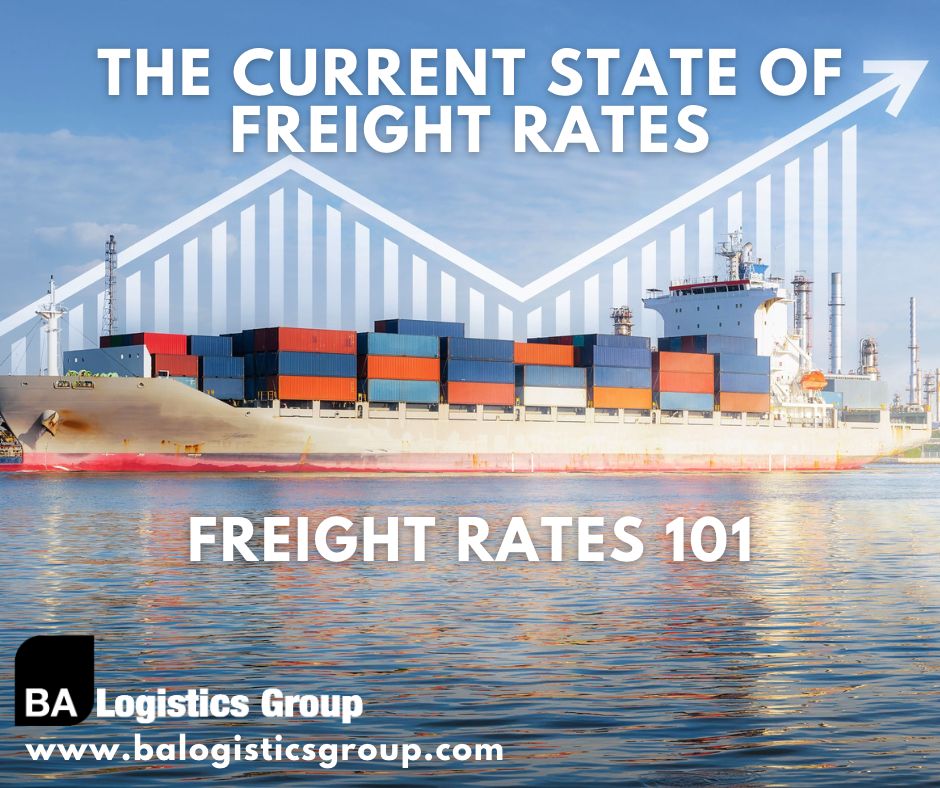The freight industry is a critical part of the American economy, responsible for transporting goods and materials across the country. However, like many industries, it has been impacted by the ongoing COVID-19 pandemic, as well as other factors such as the shortage of truck drivers and rising fuel costs. In this blog, we will take a closer look at the current state of freight rates in the U.S., including some key facts, statistics, and examples. We will also provide an outlook for what we can expect in terms of freight rates in 2023.
Current State of Freight Rates
According to the American Trucking Associations (ATA), freight rates have been steadily increasing over the past few years. In fact, the average price to move one ton of freight in the U.S. rose from $1.82 per mile in 2017 to $2.10 per mile in 2020. This increase can be attributed to a number of factors, including rising fuel costs, driver shortages, and increased demand for shipping services.
In addition to these factors, the COVID-19 pandemic has also had a significant impact on freight rates. For example, many companies experienced supply chain disruptions as factories and warehouses shut down, which caused a backlog of goods waiting to be transported. This led to a surge in demand for shipping services, which in turn drove up freight rates.
Another factor that has contributed to rising freight rates is the shortage of truck drivers in the U.S. According to the ATA, the industry was short approximately 60,800 drivers in 2018, and this number is expected to rise to 160,000 by 2028. The shortage of drivers has led to increased competition for available drivers, which has driven up wages and ultimately contributed to higher freight rates.
Examples of Rising Freight Rates
One example of rising freight rates can be seen in the cost of shipping goods from China to the U.S. According to Freightos, the average cost of shipping a 40-foot container from China to the U.S. West Coast rose from $1,700 in June 2020 to $4,600 in June 2021. Similarly, the cost of shipping a 40-foot container from China to the U.S. East Coast rose from $2,700 to $6,800 during the same period.
Another example of rising freight rates can be seen in the cost of trucking services. According to DAT Solutions, the average spot market truckload rate in the U.S. was $3.13 per mile in July 2021, up from $2.21 per mile in July 2020. This represents an increase of nearly 42% in just one year.
Future Outlook for Freight Rates in 2023
Looking ahead to 2023, it is difficult to predict exactly what will happen with freight rates. However, there are a few trends that we can expect to continue.
First, the shortage of truck drivers is likely to persist, which will continue to put upward pressure on wages and ultimately contribute to higher freight rates. Second, the ongoing COVID-19 pandemic may continue to cause disruptions in supply chains, leading to increased demand for shipping services and higher freight rates. Finally, rising fuel costs and other operational expenses may also contribute to higher freight rates.
Conclusion
In conclusion, the freight industry in the U.S. is facing a number of challenges, including rising freight rates, driver shortages, and the ongoing impacts of the COVID-19 pandemic. While it is difficult to predict exactly what will happen with freight rates in the future, we can expect to see continued upward pressure on rates due to these and other factors. As the industry continues to adapt to these challenges, it will be important for companies to remain vigilant and proactive in managing their shipping costs.

